|
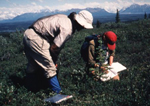
|
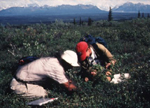
|
|
We measure the height of each seedling...
|
...and just like we do for all adult
trees, we measure each seedling's basal diameter (how big
around at the base).
|
|
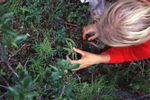
|
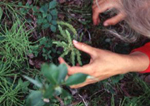
|
|
Trees that are too small can be damaged
by coring. Because we want to keep these trees living, we
get an age estimate by...
|
...counting the "annual internodes."
During each year of growth, the seedling produces a whorl
of branches out from the stem. To get an estimate of the seedling's
age, we can count those whorls up the stem, and if the whorls
have broken off, we can count the little scars that remain.
|
|
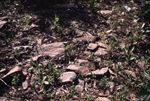
|

|
|
If the climate warms, will treeline be
able to advance? If so, are there places that might be easier
for treeline to advance? To help answer these questions, we
want to know what each seedling is growing in. What plants
are around? What type of tundra is it? (The many seedlings
in the picture above are growing in "mineral soil.")
|
How tiny are some of the seedlings we
are counting? This seedling germinated (started growing from
seed) this year and was one of the tiniest ones we've seen
at about 2 centimeters.
|